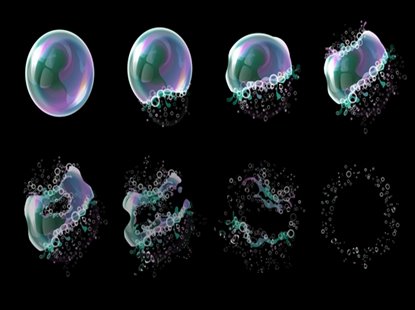Why Defoamers Are Essential in Water Treatment and Waste Management
Why Defoamers Are Essential in Water Treatment and Waste Management
Blog Article
Discover the Top Benefits of Using Defoamers in Industrial Processes
The application of defoamers in commercial processes offers a variety of compelling advantages that can enhance operational performance and item high quality. By efficiently controlling foam manufacturing, these agents not just optimize product circulation yet likewise contribute to considerable expense reductions and improved sustainability. Their application spans numerous sectors, which increases inquiries concerning their function in mitigating environmental influence while making sure regular output. Understanding these benefits is important for industries aiming to fine-tune their processes. The implications of embracing defoamers may be much more extensive than initially viewed. What certain benefits could your company harness?
Improved Process Effectiveness
Maximizing industrial procedures usually involves addressing frothing issues, which can hinder operational performance. Foam development can disrupt the correct performance of equipment, decrease the reliable utilization of sources, and make complex the tracking of critical specifications. By executing defoamers, industries can effectively minimize these problems, leading to streamlined operations and boosted performance.
Defoamers work by destabilizing the foam structure, permitting quick collapse and considerable decrease in foam volume. This activity not only boosts the flow of products via equipment, such as activators, mixers, and pipelines, yet also lessens disturbances triggered by foam overflow. As a result, devices downtime is decreased, enabling a more constant and effective production procedure.
Additionally, the usage of defoamers can cause minimized energy intake. With much less foam to handle, compressors and pumps can operate more efficiently, resulting in lower operational expenses and a general improvement in process throughput. Ultimately, the calculated use defoamers not just addresses immediate foaming obstacles however additionally adds to an extra reliable commercial ecosystem, promoting a competitive advantage in a demanding market.
Improved Product Quality
The assimilation of defoamers in industrial processes plays an essential function in enhancing product quality. By successfully regulating foam development, defoamers contribute to the consistency and harmony of last items. Extreme foam can cause oygenation, which negatively impacts the texture and stability of formulations, especially in industries such as food and finishes, beverages, and pharmaceuticals.

Moreover, defoamers facilitate far better blending and dispersion of ingredients, resulting in homogeneity in formulations. This is necessary in applications where specific active ingredient ratios are critical for efficiency and safety. Furthermore, the removal of foam can minimize the risk of contamination throughout production, more guarding product stability.
Inevitably, by boosting item quality, defoamers not only improve customer complete satisfaction yet additionally enhance brand name reputation. Their duty in preserving premium criteria emphasizes their significance in modern-day commercial procedures.
Price Reduction Advantages
Applying defoamers in commercial processes can bring about significant cost decrease advantages. By successfully controlling foam formation, defoamers lessen item loss throughout production, consequently optimizing product use. This reduction in waste equates straight right into reduced raw material costs, boosting total functional efficiency.
Moreover, the use of defoamers can reduce energy intake. Extreme foam can hinder equipment efficiency, bring about boosted energy requirements to keep production degrees. By this article mitigating foam, defoamers help with smoother operations, permitting machinery to run much more effectively and decreasing power expenses.

In addition, defoamers can reduce processing times. By utilizing defoamers, markets can simplify their processes, leading to faster turnaround times and boosted throughput.

Environmental Effect Reduction
In commercial processes, the use of defoamers plays an essential duty in mitigating ecological effects connected with foam generation. Foam can result in considerable functional inefficiencies, resulting in increased exhausts and waste generation. By efficiently managing foam, defoamers help maintain process efficiency, therefore reducing the total environmental impact of procedures.
In addition, excessive foam can overflow control systems, bring about spills that may infect dirt and water resources. Defoamers help minimize this threat by making certain that frothing does not surpass suggested limits, advertising conformity with ecological guidelines. This proactive approach not only safeguards ecological communities however additionally improves the sustainability of commercial methods.
Furthermore, using defoamers can lower energy intake in different procedures. defoamers. Lowering foam development reduces the requirement for additional energy-intensive procedures, such as boosted agitation or pumping, which might otherwise be required to take care of foam. The adoption of defoamers aligns with more comprehensive sustainability goals more info here by promoting energy efficiency while lessening the carbon impact of industrial tasks.
Eventually, integrating defoamers into commercial procedures is a tactical procedure that supports ecological stewardship and liable source administration.
Flexibility Throughout Industries
Throughout various sectors, defoamers show impressive adaptability, adjusting to the specific demands of diverse applications. In the food and drink sector, for instance, defoamers are critical to keeping product top quality by stopping foam formation during processing, which can impact appearance and taste. Likewise, in the pharmaceutical sector, defoamers make certain the stability of formulations, boosting product efficacy and consistency.
In the chemical production world, defoamers facilitate smoother operations by lessening foam in reaction vessels, thus improving yield and minimizing downtime. The paper and pulp industry counts on defoamers to improve the performance of pulp processing and paper production, making certain optimal product stability. In addition, in wastewater treatment centers, defoamers play a vital function in controlling foam throughout oygenation procedures, resulting in enhanced treatment outcomes.
The flexibility of defoamers reaches the oil and gas market, where they help in managing foam in drilling liquids and production procedures. By tailoring formulas to satisfy particular industry demands, defoamers serve as important tools that improve functional efficiency, product quality, and general procedure performance throughout a plethora of industries. Their flexibility highlights their worth in modern-day commercial applications.
Conclusion
To conclude, the usage of defoamers in commercial processes presents countless benefits, including improved performance, enhanced item quality, considerable expense decreases, and favorable environmental impacts. Their capacity to properly regulate foam formation adds to operational continuity and source optimization. The convenience of defoamers across diverse markets emphasizes their crucial duty in advertising sustainable techniques and success. The combination of defoamers represents a tactical approach to addressing difficulties connected with foam monitoring in various making environments.
Eventually, the tactical use of defoamers not just addresses immediate frothing difficulties yet additionally adds to a more effective commercial community, fostering an affordable advantage in a demanding market.
In commercial procedures, the use of defoamers plays an important role in mitigating environmental impacts linked with foam generation. By effectively controlling foam, defoamers aid keep procedure effectiveness, consequently reducing the overall ecological footprint of procedures.
In addition, in wastewater therapy centers, defoamers play a crucial role in managing foam during oygenation processes, leading to better treatment outcomes.

Report this page